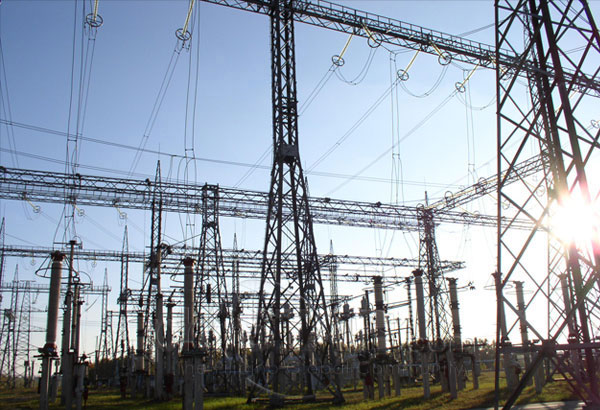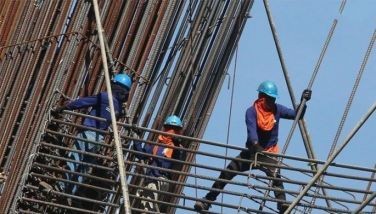The President as investment promoter

President Marcos has made his third major visit to a foreign capital within four months of his new presidency.
This third foreign trip was to New York City, the headquarters of the United Nations, where he addressed the General Assembly. What was as important, he met with US President Biden on the sidelines, on issues dealing with bilateral relations.
UN speech. The President took the occasion to deliver the country’s stand on the main global issues of the day. Therefore, his talk covered a wide range of global issues from the national perspective.
In that context, he articulated the country’s development agenda and goals, which in sum are also integrated into the overall development objectives of the United Nations.
His UN speech covered topics dealing with united global action on such issues as climate change, rising food prices, rapid technological change, the peaceful resolution of international disputes, the need to protect the vulnerable sectors of society.
He also revealed the particulars of the country’s development plan objectives that seek to achieve a high level of sustained economic growth that will enable the country to join the group of middle-income countries within sight of two years, and further achieve the reduction of poverty to a single digit figure by the end of six years.
Of greater practical advantage to his mission were the side-meetings with President Biden and other meetings that were organized to enable him to reach a broader audience in the United States.
Meeting with President Biden. The side-meeting in New York City with US President Joseph Biden was a significant development because during the six years under former president Rodrigo Duterte, US-Philippine relations suffered some strain.
Perhaps, the Philippine foreign office will agree with the US State Department public readout that said the two leaders “reflected on the importance of the US-Philippines alliance. President Biden reaffirmed the United States’ ironclad commitment to the defense of the Philippines.” Among other topics discussed were “the situation in the South China Sea and underscored their support for freedom of navigation and overflight, and the peaceful resolution of disputes (and) opportunities to expand bilateral cooperation on a wide range of issues, including energy security, climate action, and infrastructure.”
Promoting the national economic agenda abroad. President Marcos appeared in other public occasions in which he was the principal guest and speaker.
An important public forum was the one sponsored by the Asia Society in their New York headquarters. He was asked to speak on why he was visiting the city and to expound on the vision of his program as president of the Philippines.
I watched the full video of this forum at the Asia Society. The program began with a short speech by Marcos in which he summarized some of the major points he made in the United Nations address and then he discussed the economic issues facing the Philippines.
The rest of the forum (which lasted for about 40 minutes) covered a a conversation between President Marcos and Kevin Ruud, the president of the Asia Society, who was himself a former prime minister of Australia. Mr. Ruud premised the discussion and posed the questions, and President Marcos provided his answers.
The topics discussed covered a wide range of issues – on geopolitical issues of the global economy, the South China Seas and China’s role in it, Philippine economic development issues, human rights and the drug problem, US-Philippine relations, and a host of other topics, including uncomfortable ones.
From the answers he gave to the situations and questions posed, President Marcos demonstrated a wide-ranging awareness of the issues. He showed remarkable poise and confidence in his answers, which showed understanding and analysis of the subject matter. I believe that he gave a good accounting of himself and his command over complex topics.
In appearing before a large foreign audience, the President presented himself as a leader who has a worthy understanding of the big problems he faces. That, in itself, is a confidence builder about the future of the country under his watch and provides for us an optimistic public projection of what he can accomplish for his country.
I also tracked two videos of speeches delivered before businessmen and prospective investors, and one before the New York Stock Exchange. The speeches on this occasion dealt with explaining the Philippine development plan and its objectives. I arrived with the same impression about his understanding of the economic issues.
In the small public gatherings made for the purpose, he spoke about recent developments in the country, the major economic reforms that have been made to ease and attract the business climate for the country, the advantages of investing in the country, and the nature of the labor skills available for employment.
The theme of this talk for interested business investors into the country is “the time to invest in the Philippines is no longer just sometime in the future, it is now.”
To help support his efforts on investment promotion, he brought along with him not only his economic managers, but also Filipino businessmen who are big names in the country, some of whom form his advisory council from the private sector.
In his statements before the US foreign investor community, he intimated that his development program has an eight point socio-economic agenda that ultimately aims to provide quality employment, reduce poverty incidence, and elevate the country toward higher middle-income status.
He further said that would intensify job creation through investments in infrastructure and human capital development. Public investments in infrastructure will improve the interconnectivity of transport networks, promote the Philippine brand, and revitalize domestic and foreign tourism through the safe reopening of the country’s tourist destinations.
Further, he assured that his fiscal program would assure maintenance of the country’s sound macro-economic fundamentals. He said that structural reforms have been put in place with the reforms of the reduction of the corporate income tax and the consolidation of tax and investment incentives, and economic liberalization measures to permit wider participation of foreign capital in industries.
President Marcos thus concluded: “We have grand opportunities, the timing, the window of opportunities for investments and especially in capital-intensive investments in the Philippines, which is what we need now, we believe the time is now.”
For archives of previous Crossroads essays, go to: https://www.philstar.com/authors/1336383/gerardo-p-sicat. Visit this site for more information, feedback and commentary: http://econ.upd.edu.ph/gpsicat/
- Latest
- Trending






























